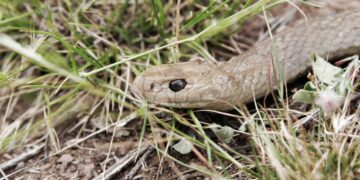The Top 10 Most Dangerous Animals in Australia

Australia is famed for its sweeping coastlines, fiery red deserts, lush rainforests—and wildlife that seems designed to shock, awe, or terrify. While the country’s reputation for danger is somewhat exaggerated, it’s also true that Australia is home to some of the planet’s most venomous and formidable creatures. What makes these animals “deadly” varies: extreme venom toxicity, aggressive defensive behaviour, or the potential to cause fatal injuries. Most pose little threat when left alone, but understanding them helps both travellers and locals stay safe. Even in a peaceful spot under a shady tree, many of these creatures still share the environment.
Below are the top 10 deadliest animals in Australia, based on their ability to cause serious harm or death to humans, alongside how encounters typically occur.

1. Box Jellyfish
Often called the world’s most venomous marine creature, the box jellyfish tops the list. Found primarily in the tropical waters of northern Australia, this translucent predator has tentacles packed with nematocysts, microscopic harpoons that deliver fast-acting venom.
A sting can cause excruciating pain, skin necrosis, paralysis, cardiovascular collapse, and can be fatal if not treated immediately. Many victims don’t even reach the shore before the venom takes effect. Stinger nets, vinegar stations, and seasonal swimming restrictions help keep beachgoers safe, but the threat remains significant.
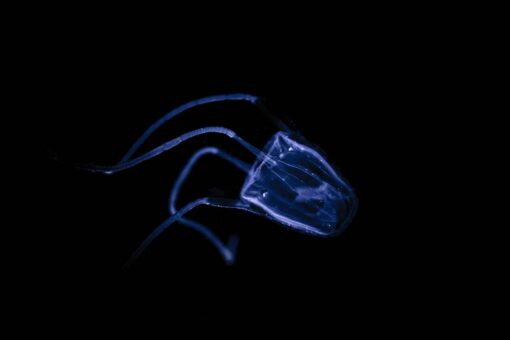
https://www.discoverwildlife.com/animal-facts/marine-animals/irukandji-jellyfish
2. Irukandji Jellyfish
Tiny but terrifying, Irukandji jellyfish are only about the size of a fingernail, making them nearly invisible in the water. Despite their size, they deliver a venom far more potent than that of most larger jellies.
Irukandji syndrome is a collection of symptoms following a sting that includes severe muscle cramping, extreme nausea, skyrocketing blood pressure, and a sense of “impending doom,” a hallmark descriptor from survivors. Fatalities, though rare due to modern medicine, still occur. Their range also extends farther south than the larger box jellyfish, broadening the risk area during stinger season.
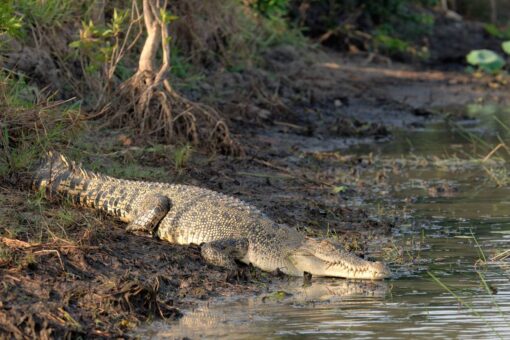
3. Saltwater Crocodile
The largest living reptile, capable of exceeding six meters in length, the saltwater crocodile (“salty”) is Australia’s apex predator. Found in the northern coastal regions and river systems, these crocodiles combine stealth, explosive power, and territorial aggression.
Unlike most animals on this list, saltwater crocodiles actively consider humans as potential prey. Attacks, though infrequent, are often fatal due to the surprise nature of the assault and the crocodile’s ability to drown victims using a “death roll.” Strict warning signs and local knowledge keep most people safe, but complacency can turn deadly.

https://australian.museum/learn/animals/spiders/sydney-funnel-web-spider/
4. Sydney Funnel-Web Spider
Among the world’s most venomous spiders, the Sydney funnel-web is notorious for its potent neurotoxin and fast-acting effects on humans. Males are particularly dangerous, as their venom contains a compound that is far more harmful to primates.
Bites can cause rapid-onset symptoms such as profuse sweating, muscle spasms, difficulty breathing, and heart irregularities. Before antivenom became widely available in the 1980s, fatalities occurred regularly. Thanks to effective antivenom and improved awareness, deaths are now extremely rare, but the spider’s lethality remains unmatched.
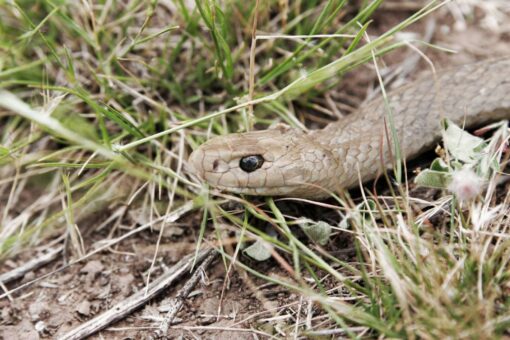
5. Eastern Brown Snake
The eastern brown snake, which inhabits a wide range of environments across eastern and central Australia, is responsible for more snakebite deaths than any other species in the country. Highly venomous, fast-moving, and sometimes defensive when threatened, this snake delivers a toxin that affects blood clotting and the nervous system.
Often hiding in the grass, it can be difficult to spot until you’re very close, making accidental encounters more common in rural areas and farmland. Symptoms can progress from dizziness and nausea to paralysis, internal bleeding, and cardiac arrest. Despite its deadliness, the snake prefers to avoid humans, and most bites occur when people attempt to handle or kill the animal.
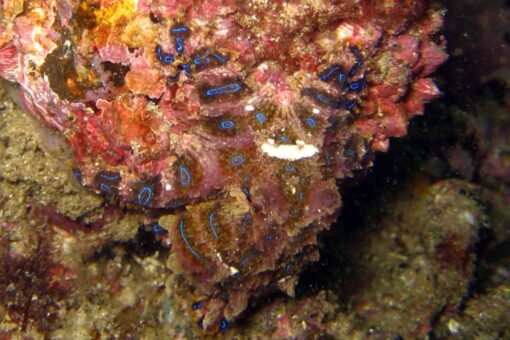
6. Blue-Ringed Octopus
Beautiful but deadly, the blue-ringed octopus is famous for the bright electric-blue rings that appear when it feels threatened. Although small, often fitting in the palm of a hand, its venom contains tetrodotoxin, a potent nerve toxin with no known antivenom.
A single bite can deliver enough venom to paralyse and kill multiple adults. The toxin shuts down nerve signals, causing respiratory failure while the victim remains fully conscious. Fortunately, these octopuses are docile and bite only when touched or handled, making most incidents entirely avoidable.

7. Stonefish
Often regarded as the world’s most venomous fish, the stonefish uses camouflage to blend seamlessly into sandy or rocky sea floors. Its dorsal spines can inject venom when stepped on, a common risk for swimmers and waders in northern waters.
Stonefish venom causes intense, immediate pain often described as unbearable, along with swelling, tissue damage, and occasionally heart failure. Without prompt treatment, including antivenom and hot-water immersion to break down toxins, the sting can be fatal. Protective footwear in shallow reef areas significantly reduces the danger.
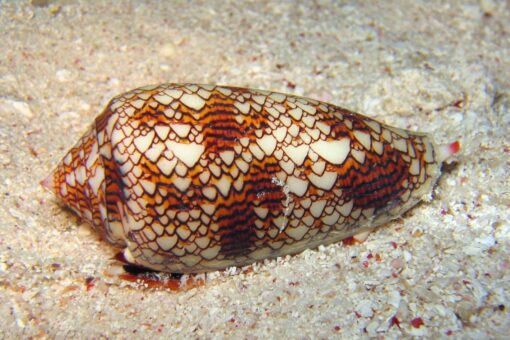
8. Cone Snail
It may look like a harmless seashell, but cone snails, particularly the larger species, carry harpoon-like teeth that deliver complex venom capable of killing a human within hours. Found along Australia’s northern coastline and on coral reefs, they strike with surprising speed when touched or handled.
The venom can cause numbness, muscle paralysis, loss of coordination, and respiratory failure. Since there is no antivenom, treatment focuses on life support until the toxin wears off. Fatalities are rare but possible, especially when a person picks up a snail for its attractive shell.
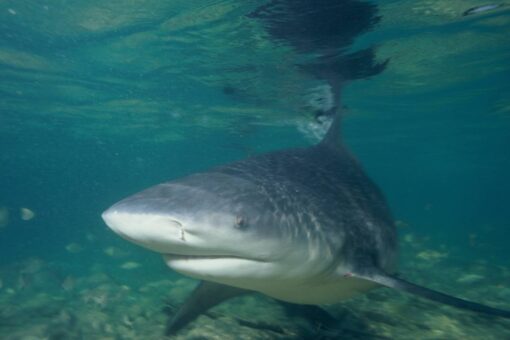
9. Bull Shark
Australia’s rivers, estuaries, and coastal waters are inhabited by bull sharks, one of the three shark species most responsible for unprovoked attacks worldwide. Their ability to tolerate freshwater makes them particularly unpredictable, as they can appear far inland compared to other sharks.
Bull sharks are aggressive, territorial, and capable of powerful bites. While fatalities are less common than dramatic headlines suggest, the combination of their behaviour, proximity to human activity, and strength makes them genuinely dangerous. Awareness and avoidance of murky water or areas with known shark activity greatly reduce the risk.
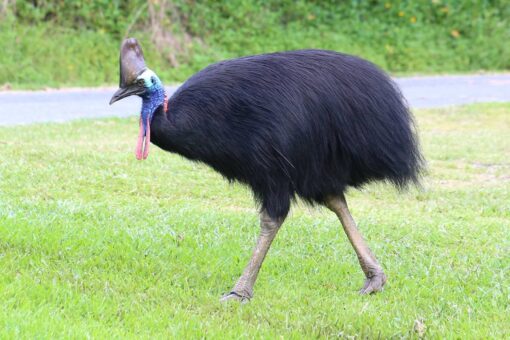
10. Cassowary
The cassowary, a large flightless bird native to northern Queensland’s rainforests, is often referred to as the “world’s most dangerous bird.” Though shy and reclusive in the wild, cassowaries can become aggressive when threatened or habituated to human food.
Their powerful legs and razor-sharp claws can slash with enough force to cause deep wounds or even fatal injuries. While deaths are extremely rare, documented attacks demonstrate their capability. Respectful distance, especially during breeding season or when chicks are present, is the best preventative strategy.
Why Australia’s Animals Are So Dangerous
Australia’s evolutionary history has produced wildlife adapted to harsh climates, resource competition, and predatory pressures. Islands often harbour unique ecological niches, and venom, whether for hunting or defence, became a successful evolutionary tool for many species.
Despite the fearsome reputation, Australia records relatively few animal-related deaths annually compared with many other countries. Modern medicine, public education, antivenoms, and clear hazard signage keep people safe. Most dangerous animals would rather avoid humans entirely.
Staying Safe in Australia’s Wild Environments
Avoiding dangerous encounters is largely about awareness and caution:
- Respect warning signs near rivers, beaches, and estuaries.
- Use protective gear when snorkelling or walking in reef areas.
- Never pick up marine animals, even those that appear harmless.
- Give wildlife space, particularly snakes, birds, and crocodiles.
- Learn first-aid basics, especially for stings and bites.
Australia’s extraordinary biodiversity is part of its charm. With knowledge and respect, visitors and residents alike can appreciate its wildlife safely, admiring the danger without inviting it.






